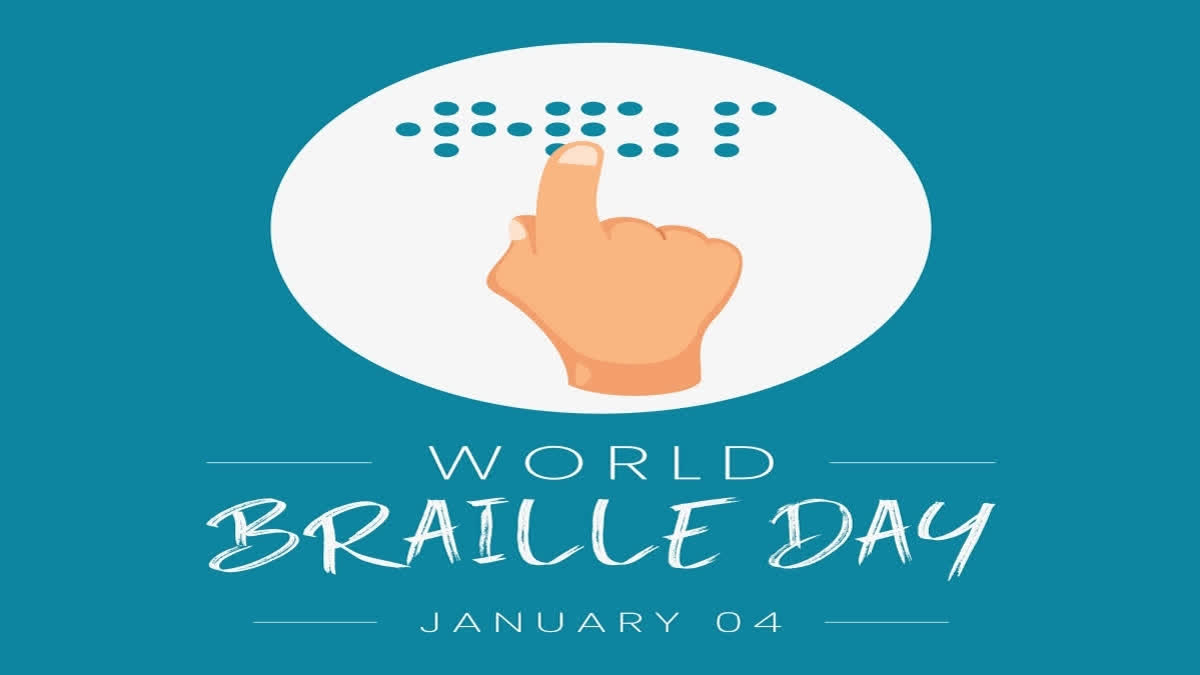New Delhi: World Braille Day, observed annually on January 4, highlights the vital role of Braille as a means of communication and empowerment for the visually impaired. The day commemorates the birth anniversary of Louis Braille, the inventor of the tactile writing system that has transformed lives worldwide.
The United Nations established World Braille Day to raise awareness about the significance of Braille in ensuring the human rights and inclusion of blind and visually impaired individuals. As millions of people globally face visual impairments, this day emphasises the need for accessible communication and education tools to promote equality and opportunity.
- Understanding Braille: A Tool for Independence
Braille is a system of raised dots arranged in cells, which individuals read by moving their fingertips over the embossed patterns. Each Braille cell comprises six dots arranged in two columns of three. These dots are combined to represent letters, numbers, punctuation, and even musical notes.
Louis Braille, born in 1809 in France, lost his sight at the age of three due to an accident. Despite his disability, he excelled academically and sought to create a better way for the blind to access written information. Inspired by a military communication code, he developed the Braille system at just 15 years old.
Today, Braille is used in multiple languages worldwide and remains a cornerstone of accessibility, even with the advent of modern assistive technologies. It empowers visually impaired individuals to access literature, education, and information independently, fostering their inclusion in society.
- The Global Need for Braille Accessibility
According to the World Health Organisation, at least 1 billion people globally suffer from preventable or untreated vision impairment. Vision loss often leads to challenges in education, employment, and social inclusion, perpetuating cycles of poverty and inequality.
The Convention on the Rights of Persons with Disabilities (CRPD), adopted in 2006, underscores the importance of Braille in education, freedom of expression, access to information, and social inclusion. Recognising these principles, the United Nations General Assembly proclaimed January 4 as World Braille Day in 2018, with the first celebration held in 2019.
- Braille’s Role in Crisis Situations
The COVID-19 pandemic highlighted the critical need for accessible information. Organisations like the UNDP and UNICEF produced Braille materials on health, hygiene, and prevention measures to ensure visually impaired individuals could access life-saving information.
Efforts to improve digital accessibility are also gaining momentum. Innovations in assistive technologies, such as Braille translation software and refreshable Braille displays, are bridging gaps and expanding opportunities for the visually impaired.
- Celebrating Louis Braille’s Legacy
Louis Braille’s contributions have left an indelible mark on the world. His system has opened doors to education, employment, and independence for millions of visually impaired individuals. Despite facing initial resistance, the Braille system has been universally adopted, enabling users to read and write efficiently.
Braille’s versatility extends beyond language; it is used in mathematics, music notation, and computer programming, ensuring comprehensive accessibility across disciplines.
- Braille in India: A Unifying Script
India has its own standardised Braille system called Bharati Braille, which was established in 1951 to unify the diverse Braille scripts used across the country. The standardization has facilitated access to education and literature for visually impaired individuals in multiple Indian languages.
Institutions like the National Institute for the Empowerment of Persons with Visual Disabilities (NIEPVD) have been instrumental in promoting Braille literacy in India. The Braille Development Unit, established under NIEPVD, continues to innovate and expand resources for visually impaired individuals.
- Challenges in Braille Accessibility
Despite its importance, Braille accessibility faces challenges, including the limited availability of Braille materials and the high cost of production. Additionally, the adoption of digital tools has sometimes overshadowed the need for traditional Braille resources.
Advocates emphasise the need to balance technological advancements with Braille literacy, as it remains an indispensable tool for education and self-reliance.
- Global Efforts to Promote Braille
World Braille Day is a platform to showcase initiatives that promote Braille literacy and accessibility. In Argentina, collaborations with the World Intellectual Property Organisation have produced hundreds of Braille educational books in Spanish. Similarly, UNDP projects in Malawi and Ethiopia have distributed Braille materials on COVID-19 awareness, ensuring health and safety for visually impaired communities.
- How to Celebrate World Braille Day
Individuals and organisations can contribute to the spirit of World Braille Day in various ways:
Learn Braille: Understanding Braille basics can foster empathy and awareness.
Support Braille Initiatives: Contribute to organisations that produce Braille materials or promote literacy.
Spread Awareness: Use social media to educate others about the importance of Braille.
Advocate for Accessibility: Push for Braille signage, accessible websites, and inclusive infrastructure.
Donate Materials: Provide Braille books and resources to schools and libraries.
- A Call for Inclusivity
World Braille Day is a reminder of the collective responsibility to create an inclusive society where visually impaired individuals can thrive. As Louis Braille once said, “Braille opens the door for thousands of blind people to become independent.”
By championing Braille's literacy and accessibility, we honour his legacy and work toward a world where everyone has equal opportunities, regardless of their abilities.



